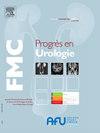法国泌尿科医生经皮肾结石切除术(NLPC)的评价问卷
Q4 Medicine
引用次数: 0
摘要
经皮肾结石切除术(NLPC)在法国每年约有1200例手术。NLPC最困难的部分将是穿刺和探索肾腔。本研究的目的是了解NLPC在泌尿学日常实践中的地位。材料和方法从2023年2月到4月,在法国泌尿学协会(AFU)注册的泌尿科医生完成了一份包含10个问题的专用问卷。它通过电子邮件分发,关注从业者的状态和程序。它已经通过了AFU Lithiase委员会(CLAFU)的测试和验证。收到了227份答复。进行了描述性分析。结果63.9%的参与者接受过技术培训,21.6%没有实践,14.5%正在接受培训。43%的参与者在公共部门工作,46%在自由职业,11%在混合职业。肾脏穿刺和穿刺地点的选择是最困难的(60%和30.2%)。其次是肾腔检查(26%)。从技术改进中获益最多的手术时间是肾穿刺(55%)和肾腔探索(33%)。第一次肾切除术和对热局部腔的全面检查是手术中最困难的部分。大多数非NLPC泌尿科医生对超过2厘米(69%)的肾结石进行多次尿道镜检查。这些结果将被考虑到NLPC的机器人辅助开发中。在英国,每年大约有1200例经皮肾结石切除术(PCNL)进行。有人认为,穿刺和探索肾脏腔是手术中最复杂的部分。本研究的目的是确定PCNL在泌尿科日常实践中的作用。在法国泌尿学协会(AFU)注册的泌尿科医生在2023年2月至4月期间回答了一份具体的10个问题问卷。问卷的重点是从业人员的状况和实践,并通过电子邮件分发。该问卷由AFU Lithiasis委员会(CLAFU)进行了测试和验证。收到了二百二十七份答复。本课程的目的是提高学生的英语水平。结果:64%的参与者接受了技术培训,22%没有实践,15%正在接受培训。43%的人在公共部门工作,46%在私人诊所工作,11%在混合诊所工作。最困难的步骤(分别为60%和30.2%)是穿刺肾脏和选择穿刺部位。其次是探索肾脏空洞(26%)。穿刺肾脏(55%)和探索肾脏腔(33%)是从技术改进中获益最多的手术程序。结论:在没有联合方法的情况下进行肾穿刺和完整的肾腔探索似乎是最合适的优化步骤,这些结果将被考虑在辅助PCNL的机器人设备的设计中。大多数没有进行PCNL的泌尿科医生(69%)对2厘米以上的肾结石进行了多次尿道镜检查。本文章由计算机程序翻译,如有差异,请以英文原文为准。
Évaluation de la néphrolithotomie percutanée (NLPC) parmi les urologues français par un questionnaire dédié
Introduction
La néphrolithotomie percutanée (NLPC) représente environ 1200 procédures par an en France. Les temps les plus compliqués de la NLPC seraient la ponction et l’exploration des cavités rénales. L’objectif de cette étude est de connaître la place de la NLPC dans la pratique quotidienne de l’urologie.
Matériel et méthode
De février à avril 2023, les urologues inscrits à l’Association française d’urologie (AFU) ont répondu à un questionnaire dédié comprenant 10 questions. Diffusé par e-mail, il s’intéresse au statut des praticiens ainsi qu’au déroulement de la procédure. Il a été testé et validé par le Comité Lithiase de l’AFU (CLAFU). Deux cent vingt-sept réponses ont été obtenues. Des analyses descriptives ont été réalisées.
Résultats
Au total, 63,9 % des participants étaient formés à la technique, 21,6 % ne la pratiquaient pas et 14,5 % étaient en cours de formation. Quarante-trois pour cent des participants exerçaient en secteur public, 46 % en libéral et 11 % avaient une pratique mixte. La ponction rénale et le choix du site de ponction étaient les temps les plus difficiles (60 et 30,2 %). Venait ensuite l’exploration des cavités rénales (26 %). Les temps opératoires qui bénéficieraient le plus d’une amélioration technologique sont la ponction rénale (55 %) et l’exploration des cavités rénales (33 %).
Conclusion
L’abord rénal et l’exploration complète des cavités pyélocalicielles sont les temps chirurgicaux les plus difficiles de la procédure. La majorité des urologues ne faisant pas de NLPC réalisait des urétéroscopies multiples pour les calculs rénaux de plus de 2 cm (69 %). Ces résultats seront pris en compte pour le développement d’une aide robotisée à la NLPC.
Introduction
In France, around 1200 percutaneous nephrolithotomy (PCNL) procedures are performed each year. It has been suggested that the puncture and exploration of the kidney cavities are the most complicated parts of the procedure. The aim of this study was to determine the role of PCNL in daily urological practice.
Materials and methods
Urologists registered with the Association française d’urologie (AFU) answered a specific 10-question questionnaire between February and April 2023. The questionnaire focused on practitioner status and practice and was distributed by e-mail. The questionnaire was tested and validated by the AFU Lithiasis Committee (CLAFU). Two hundred and twenty-seven responses received. Descriptive analyses were carried out.
Results
Of the participants, 64% were trained in the technique, 22% were not in practice and 15% were in training. Forty-three percent worked in the public sector, 46% in private practice and 11% in mixed practice. The most difficult steps (60 and 30.2% respectively) were puncturing the kidney and choosing the puncture site. This was followed by exploring the kidney cavities (26%). Puncturing the kidney (55%) and exploring the kidney cavities (33%) are the surgical procedures that would benefit most from technological improvements.
Conclusion
Renal puncture and complete exploration of the renal cavities without a combined approach appear to be the most appropriate steps for optimisation, and these results will be taken into account in the design of a robotic device to assist with PCNL. Multiple ureteroscopies for kidney stones larger than 2 cm were performed by the majority of urologists who did not perform PCNL (69%).
求助全文
通过发布文献求助,成功后即可免费获取论文全文。
去求助

 求助内容:
求助内容: 应助结果提醒方式:
应助结果提醒方式:


